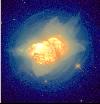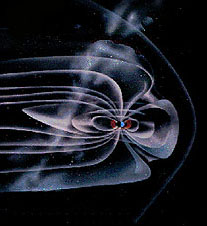
| THE INTEGRITY PAPERS | Genre Group | ceptualinstitute.com |


Erich Harth
Syracuse University
EXPLICIT COGNITION THROUGH INTERNAL AND EXTERNAL SKETCHPADS
My model of perception and consciousness (1-4) envisions a centrifugal projection of cognition that is implicit in the association areas and cortical 'working memory', onto peripheral sensory areas. Cognition becomes 'explicit' only when images generated there through top-down control become simultaneously viewed and manipulated by higher cortical areas. Thus, in the visual system, re-entrant pathways are able to draw 'mental images' at cortical visual projection areas, and perhaps as peripherally as the LGN. I have invoked hill-climbing mechanisms to account for this 'inversion' of sensory processing, and demonstrated the feasibility of the model through numerous computer simulations. I proposed that consciousness is a phenomenon arising through the mutual interaction between peripheral (more or less retinotopic) imagery and central associations, in a manner which I have called the 'creative loop'.
In my present work, I am proposing that the use of external media, as in speech,
drawing, and writing, is but a natural extension in which the 'internal sketchpads' are
supplemented by even more peripheral storage facilities that have the virtue of larger and
more lasting capacity. I find it significant that, as described long ago by Piaget,
children's use of language is at first almost exclusively to talk to themselves, which
again reinforces the picture of thought and cognition being a loop of activity, in which
central cortical areas use peripheral sketchpads. I believe that the explosive use of art
in the upper paleolithic is explainable by
man's fascination with this new and powerful intellectual tool.
I want to mention also, that I would be interested in leading a discussion at one of the workshops on the contents of my recent book "The Creative Loop. How the Brain Makes a Mind", Addison-Wesley, Helix Books, 1995.
References:
1. E. Harth, K. P. Unnikrishnan, & A. S. Pandya. 1987. 'The inversion of sensory processing by feedback pathways'. SCIENCE, 237, 184-187.
2. E. Harth. 1995. 'The sketchpad model'. CONSCIOUSNESS & COGNITION, 4, 346-368.
3. E. Harth. 1996. 'Self-referent mechanisms as the neuronal basis of consciousness',
in TOWARD A SCIENCE OF
CONSCIOUSNESS, Hameroff et
al. (Eds.), pp. 611-631, MIT Press.
4. E. Harth. 1996. 'From brains to neural nets to brains'. (Invited paper submitted to
NEURAL NETWORKS,
Special Issue on
Consciousness).
THE INTEGRITY PAPERS (LINKS TO CEPTUAL READINGS)

GENRE WORKS (OTHER WRITERS)
POETICS
MINDWAYS (LINKS TO GLOBAL THINKERS)

"NON-FRACTAL COMPLEXITY" (Order the Videotape)
| HOME |
![]()
![]()